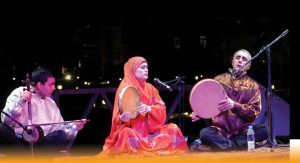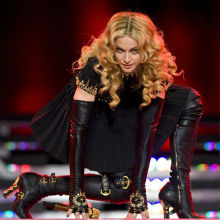Some sounds work
ROMINA POWER and AL BANO – “FELICITA” FOR TWO
 Romina Power and Al Bano sang many love songs. Love is a song for two. If she is happy, then the melody will be lively and cheerful. But it’s worth jealousy or insecurity to sneak into the souls of singers, how falsity is heard in music, and the text does not add up to poetry, and the once beautiful sounds of the sensational hit are becoming quieter …
Romina Power and Al Bano sang many love songs. Love is a song for two. If she is happy, then the melody will be lively and cheerful. But it’s worth jealousy or insecurity to sneak into the souls of singers, how falsity is heard in music, and the text does not add up to poetry, and the once beautiful sounds of the sensational hit are becoming quieter …
American Beauty
She is a young beauty from Hollywood with the imperious surname Power (which means “power”, “power”). Her parents are not from ordinary inhabitants: father Tyrone is an Italian emigrant, an actor popular in 1930-40, and her mother is also an actress – Linda Christian, who dreamed of making a modeling career. It is easy to predict what fate was preparing for the rich girl Romina. At the age of 14, she shone on the screens, starring in several very candid films, and also recorded a solo album. Then the girl realized that she wanted to do music. Her mother, who dreamed of seeing her daughter as a brilliant actress, completely disagreed with this choice. She pinned hopes on Romina related to the realization of her own cherished, but not fulfilled, desire for a stellar career. Continue reading
TAMARA SINYAVSKAYA – OPERA QUEEN
 Once Tamara Sinyavskaya admitted that she always loved difficult tasks, and fate generously endowed them with them throughout her creative life – each new opera party as a new peak requiring conquest. And such peaks are not enough for one mountain range.
Once Tamara Sinyavskaya admitted that she always loved difficult tasks, and fate generously endowed them with them throughout her creative life – each new opera party as a new peak requiring conquest. And such peaks are not enough for one mountain range.
Tamara Ilyinichna managed to make a dizzying career as an opera singer, earn recognition of connoisseurs of vocal skills around the world, forever write her name in the history of art, becoming a great soloist of the second half of the 20th century.
As a child, Tamara loved to go into the porches of old Moscow houses, where there was excellent acoustics, and arrange real concerts, listening to the sound of her voice. singer Tamara Sinyavskaya Especially she liked to imitate the famous Argentine singer Lolita Torres, whose fame was then booming throughout the world. Continue reading
Mugham
MUG AM is the main form (genre) of Azerbaijani professional music of oral tradition.
AM is the main form (genre) of Azerbaijani professional music of oral tradition.
Part of the pan-eastern culture of macamata. The poetic basis of Mugam is the gazelles of classical and modern poets. Monodial mugham art has developed over many centuries, transmitted from generation to generation.
The teaching method is based on auditory perception, memorization and creative comprehension of mugham information transmitted from the master (ustad) to the student (shagird). Cyclic mugam compositions are embodied in small and large instrumental (solo) and vocal-instrumental (ensemble) forms. The mugham composition is based on frets (modes), each of which has a characteristic final melodic formula (ayag).
An important feature of Azerbaijani Mugam is the improvisation of a metrically free ornamental melody within the framework of a certain canon. Performers also have some freedom in composing a mugam composition (selection of parts, their sequence and quantity). Depending on local characteristics, time (season, time of day) of performance, talent of the performer is the same. mugams can have different options. Mugam schools are preserved: Baku, Karabakh, Shirvan, etc. Continue reading



